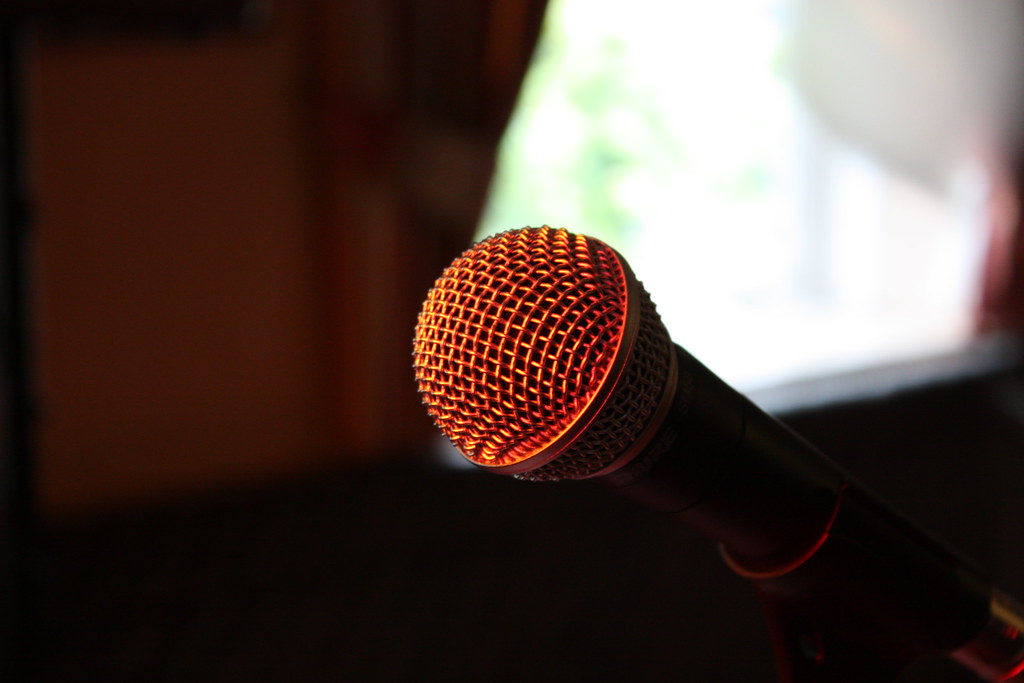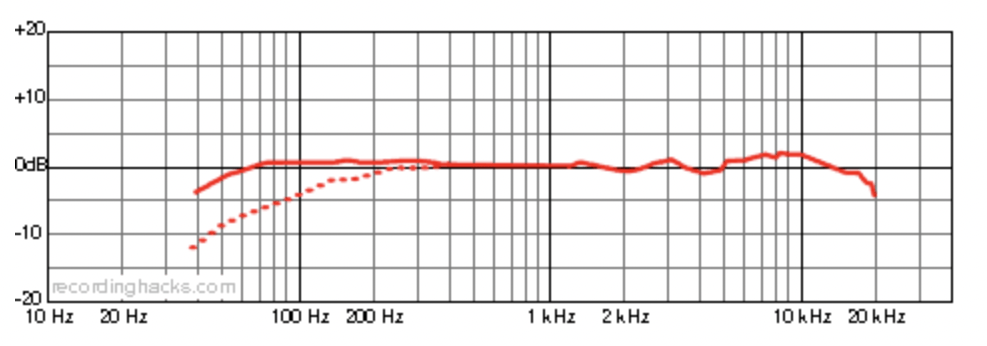Summary
- Using OnlineSequencer, I created six motives, using only three notes for each small piece. With a three-note limit, this exercise really helps the brain to not get overwhelmed, and it can bring on more creativity when the brain has limits and has to work around them.
Melody Terms and Definitions
In music, a triad is a set of three notes (or “pitch classes“) that can be stacked vertically in thirds.[1] The term “harmonic triad” was coined by Johannes Lippius in his Synopsis musicae novae (1612). Triads are the most common chords in Western music.
When stacked in thirds, notes produce triads. The triad’s members, from lowest-pitched tone to highest, are called:[1]
- The root
- The third
- The fifth
– Triad definition from Wikipedia
- Theme – a longer, more flowing melodic idea
- Motive – a short, rhythmic idea
- Period – 8 (ish/around 8) measures of music
- Phrase – 4 (ish/around 4) measures of music
- Antecedent (Question or First) Phrase – sets the music up and leads you to expect something
- Consequent (Answer or Second) Phrase – releases the tension built up by the first phrase
- Scale Degrees:
- Tonic Scale Degree – the note that begins and ends the scale, the note that releases the tension, one scale degree that creates a feeling of stability and resolution.
- Supertonic, Mediant, and Submediant Scale Degree – scale degrees with a moderate level of tension useful for transitioning and carrying on an idea
- Dominant, Subdominant, and Leading Tone Scale Degree – the notes that build tension, several scale degrees that create a high level of tension/the need to resolve the tonic
- Steps – any movement using half or whole steps
- Leaps – any movement using intervals larger than a whole-step
- Conjunct motion – melody built primarily out of steps that move smoothly (example: moving in a scale)
- Disjunct motion – melody built primarily using leaps
- Repetition (the god particle of music) – use repeated material to create a link between the two phrases of a period
- Contrast – write two phrases that contain contrast material to create tension and interest
- Variation – halfway between repetition and contrast. The two phrases include some recognizable material and some varied material.
Composition term definitions from Dr. Henke’s video: How to Write a Melody
- Dr. Jamie Henke, artsdivision.wisc.edu/staff/jamie-henke-jamie-henke/
My Motives
NEW

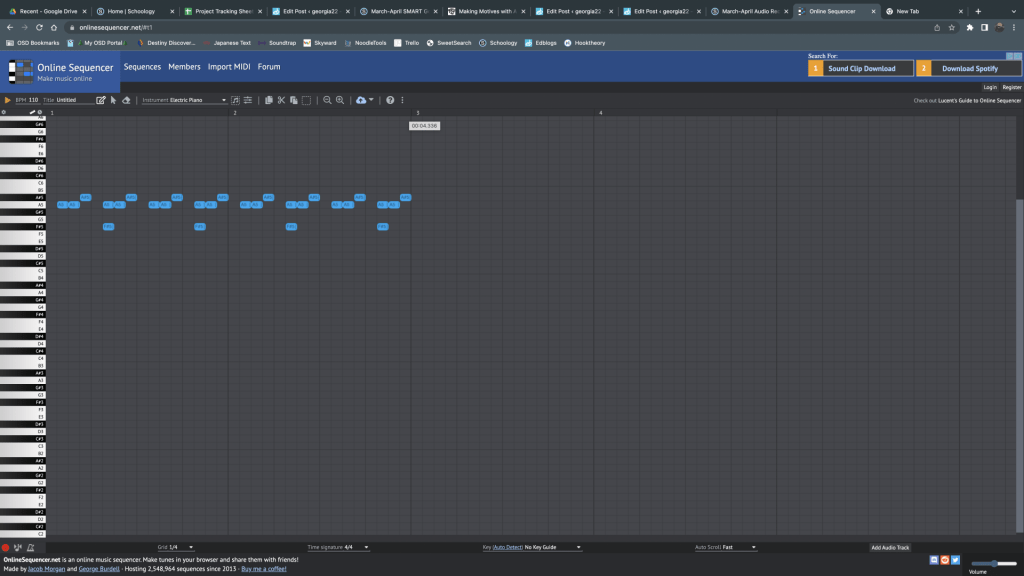
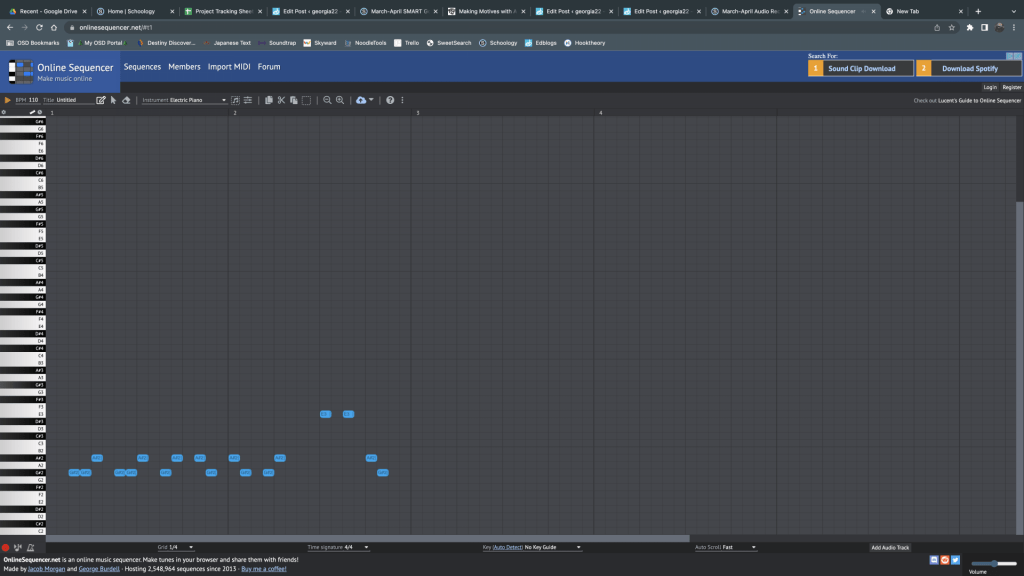
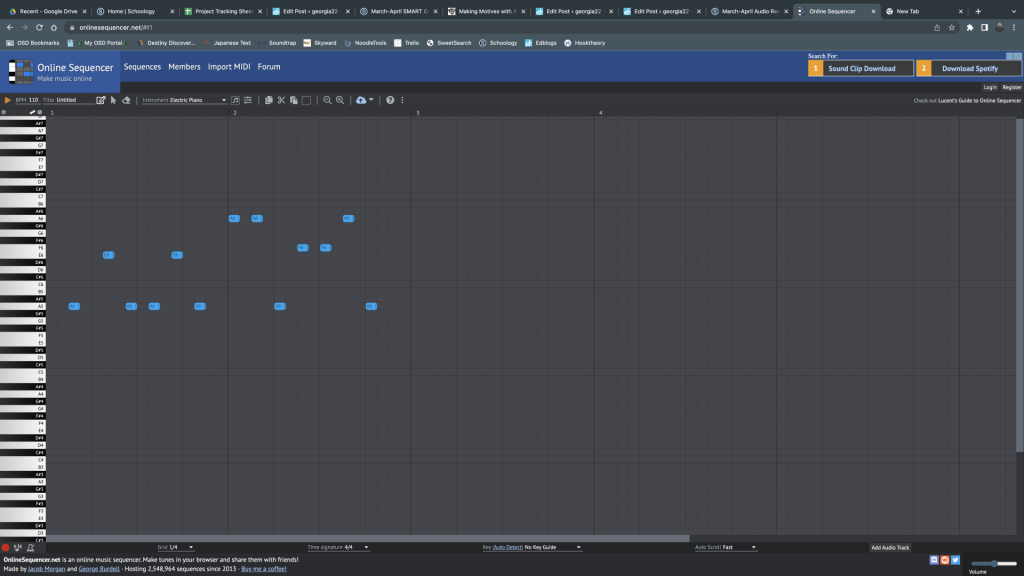
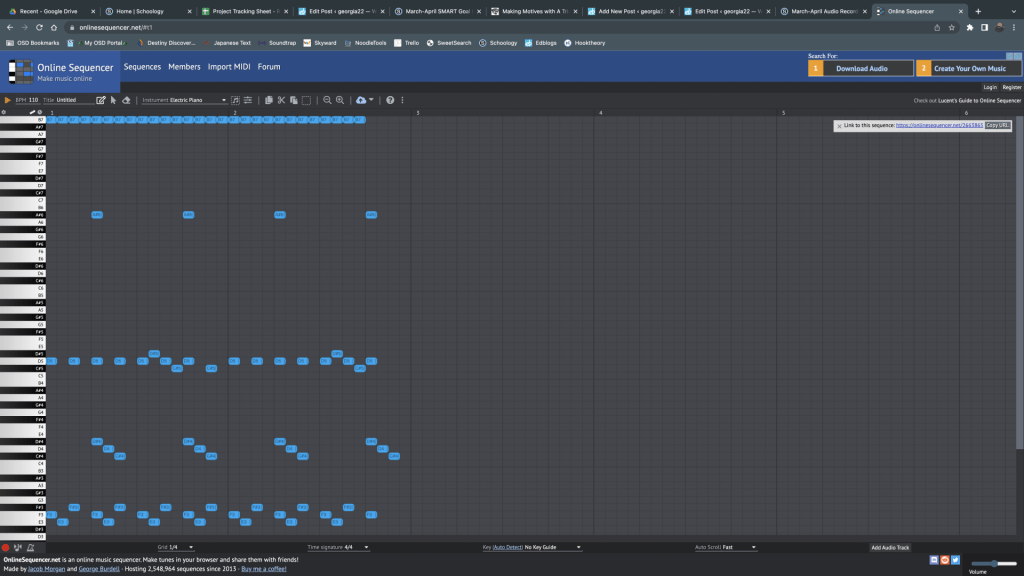
Doesn’t go with the project but I made it anyways
OLD
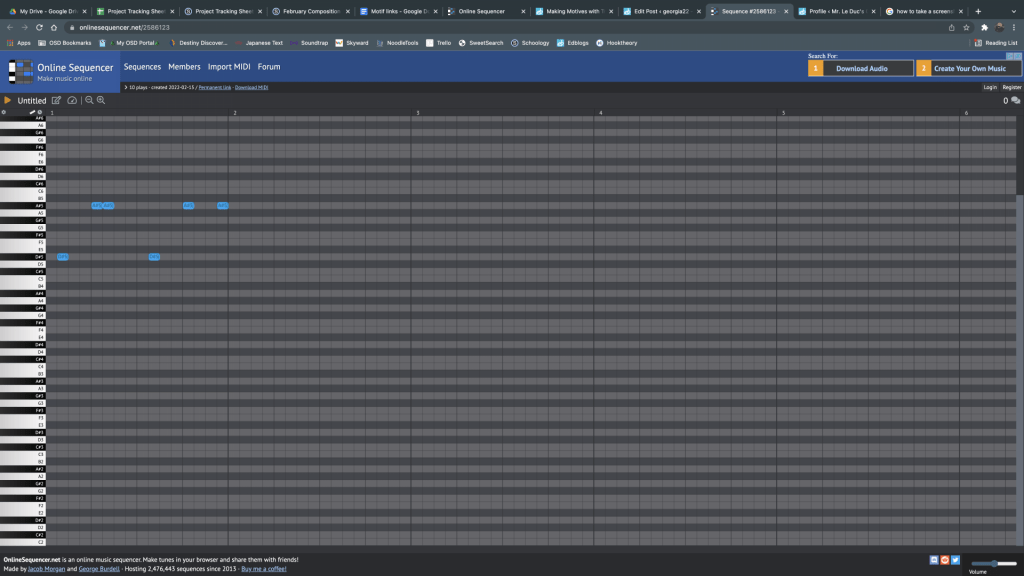
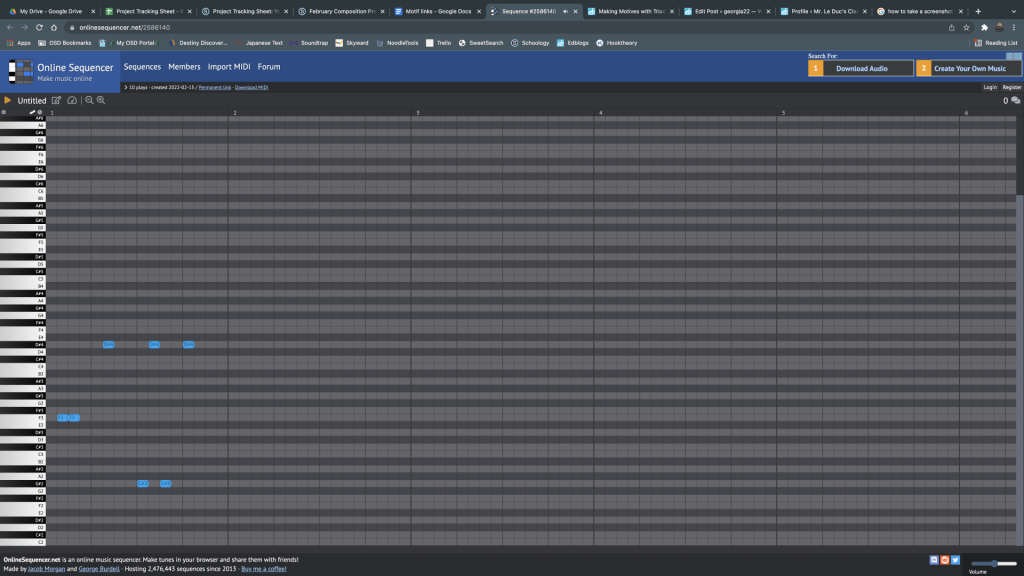
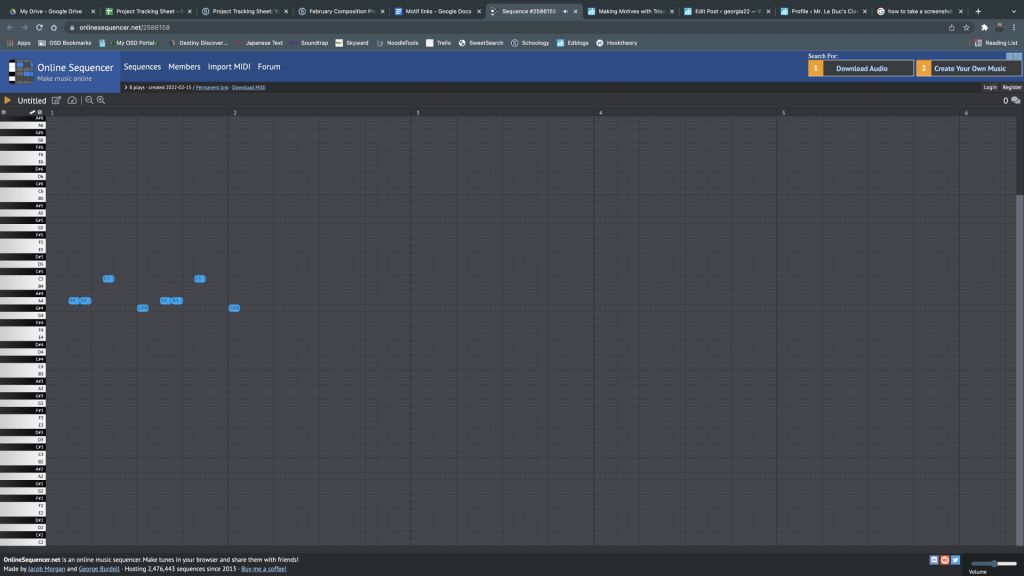

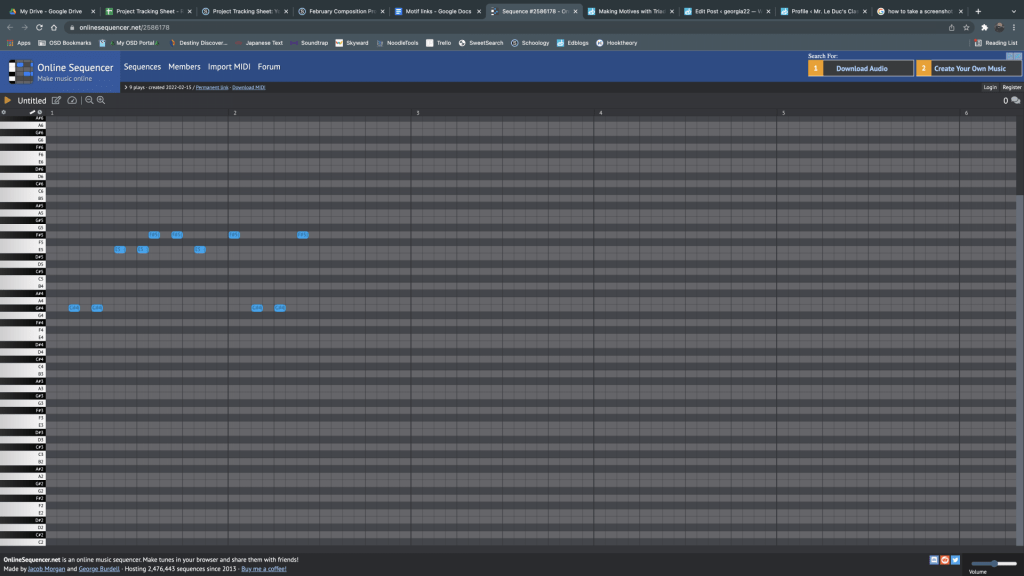
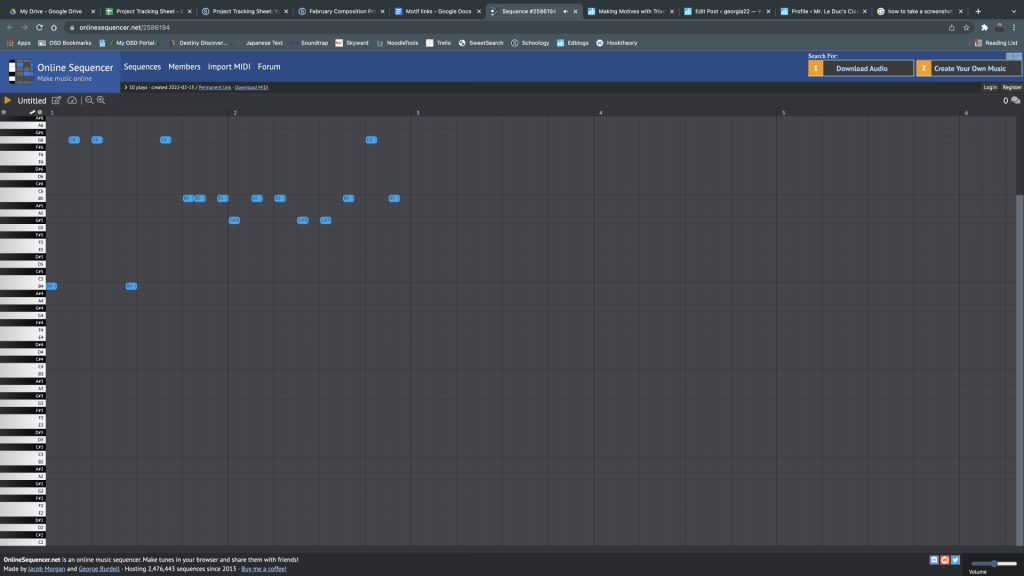
What I Learned & Problems I Solved
- When the brain is forced into a box, it forces it to be creative inside of the box. I get pretty overwhelmed usually trying to work with infinite possibilities, this exercise allowed me to still be creative, but have limitations.
- I was worried that all of my Motifs would sound too similar, so to combat that issue I worked with different note ranges, some higher, some lower.
